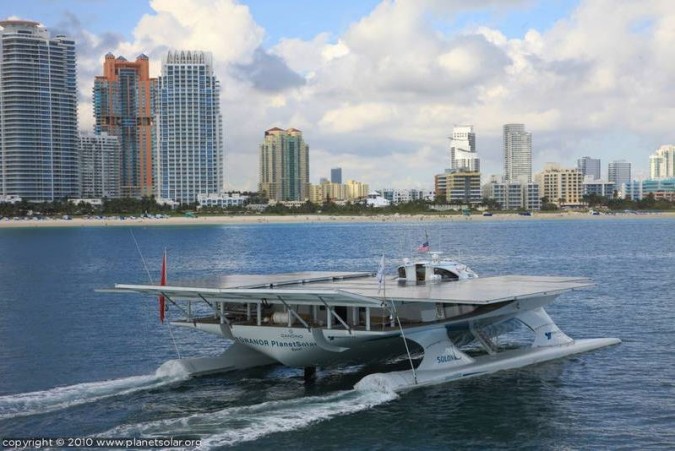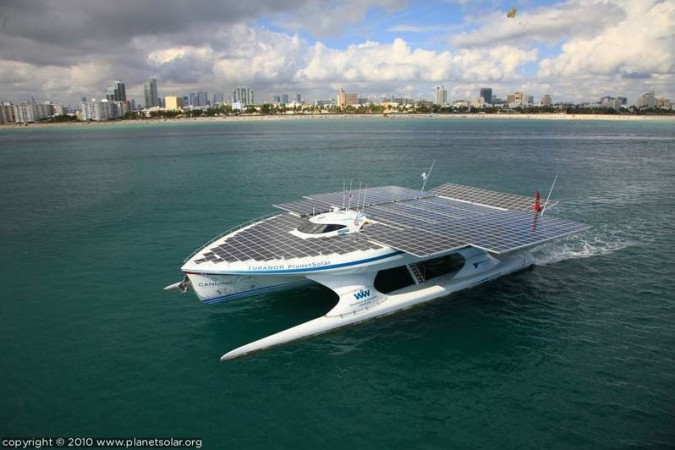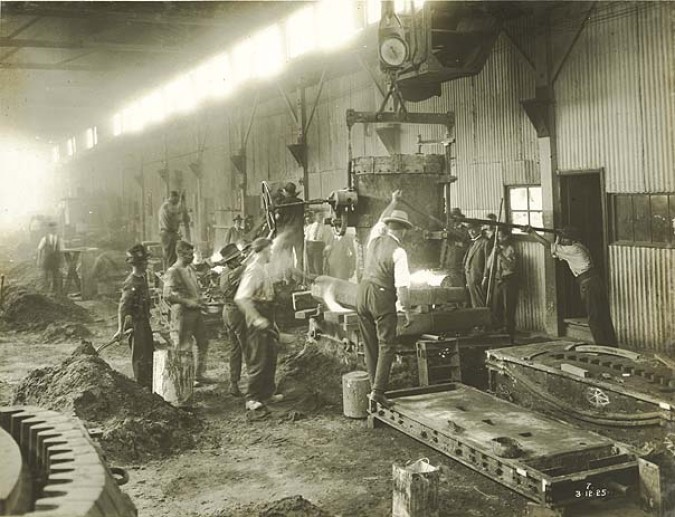Archive for 2011
False 911 call apparently due to scratchy phone line at my house
I had a strange visit from the San Francisco Police Department today. The nice officer said she was replying to a 911 call from my land line phone. She said nobody spoke during the 911 call, but the dispatcher heard a scratchy noisy line. My phone line did have a loud scratchy hum on it the few times I tried to use it last week. I didn’t investigate at the time, as I had my cell phone and just used that instead.
I showed the officer around my room to convince her nothing was wrong, at her request. I told her about the scratchy line quality, but she didn’t ask to check it herself. She was quite pleasant and soon departed, but advised me to call ATT to find out what’s wrong.
I checked the line immediately, and it was still scratchy and noisy. I called ATT on that line, as it was still possible to speak and hear on the line. ATT said it was probably an issue on their end and advised sending a technician to investigate. They warned that if the problem was mine that they would charge me $55. I told them I wanted to do some more tests on my own before committing to a possible charge, and told them not to send a technician. I am glad I did, as I fixed the problem within minutes of ending that call.
I eliminated the scratchy line by removing from the circuit an adapter that converted 1 phone jack into 2 phone jacks! This adapter was plugged directly into the ATT access box in my inside garage. When I plugged my phone directly into the access box without the adapter, the line was suddenly ‘like new.’ Had ATT made that test, they would have likely charged me $55, because I don’t think anything was wrong with their circuitry.
I did a search online to see if a noisy line could trigger a call to 911, and I found accounts written by others that said that it could. I didn’t know that until today.
We have been experiencing intermittent high speed Internet service, also from ATT over the same wire pair my phone uses, so I hope that by removing the faulty adapter that our Internet connection stability improves.
Note that my phone number is listed in the telephone book, so I am easy to reach.
Solar electricity powered yacht circles the globe – features slide out solar panels like I plan for my bus conversion
When I recently wrote about adding slide out solar panels to my bus I’m converting to a green home on wheels, I wondered if I was the first to think of putting solar panels on slide out roof panels on a bus conversion.
It seemed like such a simple idea that I couldn’t have been the first to think of it.
I still don’t know if I am, but I was excited this week to learn that someone has already built a solar powered yacht with slide out solar panels.
This yacht, named TÛRANOR PlanetSolar, is currently being piloted around the world, propelled exclusively by solar photovoltaic generated electricity.
The outbound ‘wings’ that hang over the sides of the vessel slide out to give more surface area for solar energy collection.
I plan to add similar but smaller wings to my RTS bus conversion.
Have a look at the planet solar website… it’s impressive. They have sponsors and issue press releases frequently. It’s inspirational to me.
Perhaps I can recruit sponsors to help me quickly finish my RTS bus conversion and circumnavigate the globe on land, spreading the word about how possible it is with current technology to live well while consuming far less energy.
Oakland, California tells Novella Carpenter she needs a permit to sell produce she grows at home
One of my heroes is Novella Carpenter, author of Farm City: The Education of an Urban Farmer.
Carpenter inspired me to start my own urban homestead in San Francisco, California, where I live.
Today Novella is getting significant press coverage because she got caught selling chard from her backyard garden. Here are links to a selection of the stories, which have generated hundreds of user comments hours after publication:
- Oakland gardener questions need for permit to sell produce
- Popular produce stand in West Oakland shuttered until farmer sorts out permit issue with city of Oakland
- City of Oakland fines urban homesteading author Novella Carpenter
- Yep, Novella Carpenter still needs a permit if she wants to sell produce from her garden
- Iconic urban farmer Novella Carpenter
- Oakland cracks down on Novella
I’ve met Carpenter at the Commonwealth Club of California, after I saw her speak there January 25, 2011.
Oakland, California is demanding Carpenter acquire a permit to sell products from her homestead. Apparently such permits cost a few thousand dollars.
Since Carpenter is famous and has zillions of supporters, I suspect she’ll come through this experience just fine. A permit costs money, but she can raise the money from her fans and then be compliant with the rules. The result will be more visitors to her vegetable stand because she’s getting a ton of great press right now.
I learned from the press coverage she’s now receiving that she paid just $30,000 for the vacant lot behind her apartment that she had been squatting on until recently. She received this favorable price because the owner wanted her to own the land. Doing this probably made the past owner feel good, and gave her some bragging rights that she enabled Carpenter to really get serious about her urban homestead.
I admire it when people get famous by doing something interesting and passionately writing about it.
In case you missed my post from January 25, 2011, here’s a clip of Carpenter speaking at the Commonwealth Club of California:
Carpenter teaches homesteading classes, including on how to raise dairy goats. I plan to take that one as soon as it’s offered again.
Anthem Blue Cross of California voice response system information leak?
I suspect there is an information privacy security hole in the voice response system for customer support at Anthem Blue Cross of California. I alerted them to my suspicion some months ago, and nobody followed up with me to reassure me that there is not a privacy leak.
As of today, April 1, 2011, the system still operates in the same way that provoked my suspicion. This post is not an April Fools joke… I am serious.
I need your help to verify if my suspicion is correct, and if you’re a health insurance customer of Anthem, you can provide this help to me in about 2 minutes.
Here’s the suspected Anthem Blue Cross of California privacy breach:
When one calls the US phone number (800) 333-0912, which is the ‘customer service’ number printed on my insurance card, a voice response system asks me to enter my social security number. After I do this, the system asks me my birthday, and then it gives instructions on how to enter this information on the telephone keypad. This would be fine except that the voice response system uses an example date that contains the exact year in which I was born.
Perhaps this is pure coincidence, but I doubt it, thus this post.
What I suspect is happening in their software that drives the voice response system is that it looks up the social security number and pulls the year of birth associated with that number and uses that year to compose the example language.
Why is this a potential problem?
It allows anyone with the social security number of an Anthem Blue Cross of California customer to quickly find out approximately how old that person is.
Since Anthem Blue Cross of California has millions of customers, this exposes a lot of ages.
How can you help me verify my suspicion?
If you’re a customer, call (800) 333-0912 or the number on your insurance card and key in your social security number, and listen to hear if the voice response system says the year of your birth. If it does, and the year is not my birth year, then there may be a widespread information leak.
Please take 2 minutes to help me out. You may leave a comment to tell me the results.
Thanks.
Dodo bird sculpted from a log with a chainsaw
My grandmother Elsie Battaglia is 99 years old.
One of her prized possessions is the wood sculpture dodo bird pictured below. It was carved by a young man with a chainsaw perhaps 40 years ago. Grandma loves telling the story of how she knew of this young man for years, and how he had not been motivated much in life, and hadn’t accomplished anything noteworthy. Then one day, someone gave him a chainsaw and some logs, and he taught himself to produce sculptures. He went into business for himself and did a brisk business selling his creations.
This dodo bird means a lot to me because it’s one of the few items that Grandma took from house to house with her as she’s moved over the years. I remember it from when I was a young child.
This picture was taken on March 9, 2004 when Grandma lived part of the year at her house she then owned in Desert Hot Springs, California.
My Grandmother is slowing down, and she recently stopped exercising regularly at Curves, the health club chain. I believe she only joined as a member at about age 93 or so. Her friends would pick her up and take her to Curves since she chose to no longer drive a car some years back.
On a recent visit, I made copies of all her photo albums, some 16 gigabytes, and she gave me permission to post them. There are thousands of pictures going back decades, and I’m not yet sure how to approach this big project. Stay tuned.
My grandmother was on the Internet daily with WebTV in 1997, and thankfully I saved all of her emails. She only signed off permanently years later because she was getting too much spam to handle. WebTV was slow and cumbersome, and I can understand her frustration with all the unsolicited email.
I love my grandmother, and I’m going to visit her next month.
I cooked rabbit for the first time
I have ordered rabbit occasionally from restaurant menus. I’ve enjoyed eating rabbit, but I never have cooked it.
I shop for meat at Guerra Meats at 490 Taraval Street in San Francisco, California, where I live. This charming store was opened by Mark and Battista Guerra in 1954, and I often hear the butchers greet their customers by name.
On March 28, 2011 when I was shopping there for boneless chicken breast, I saw that a full rabbit only cost $1 more per pound. I purchased the rabbit and the butcher cut it up on a floor mounted serious looking band saw with no blade guard protecting the 12 inches of exposed blade. His fingers were quite close to that blade as he made about 10 cuts in short order. I cringed watching him work as I am so much more careful when working around power tools, and my neighbor told me a story only weeks ago where a butcher friend of his was cutting frozen meat on a band saw and cut a handful of fingers off and didn’t know it because his hands were so numb from the cold. His coworkers alerted him when they saw blood everywhere. Ouch!
Yesterday, March 29, 2011, I made two meals from the rabbit. I cut off about 4 ounces of meat and made one of my Chinese recipes, with snow peas, mushrooms, zuchinni, onions and red bell pepper. The result was delicious. Rabbit is close in taste to chicken. It’s a bit more substantial I found.
Later, I fried the remaining rabbit as if I were making fried chicken. This was even better than the Chinese dish. I found the rabbit to be more flavorful than chicken, so much so that it really was finger licking good. It was scrumptious.
Now I’m wondering if I could ever bring myself to raise rabbits for meat. The book Urban Homesteading that inspired me to try urban homesteading makes it sound easy. Rabbits are so cute and cuddly I don’t know if I could ever kill one to eat.
Have any of my readers killed a rabbit, duck, chicken or quail for food to eat personally? If so, please write a comment describing how it felt and how difficult it is.
Profile former pipe bending machine – I want one
I am continuing to work on my RTS bus conversion on weekends and in the evenings.
My current project is designing a sliding window shade that insulates the window when closed. Sadly, the RTS has single pane windows, and double pane windows are not available. For most conversions, one can buy factory new double pane replacement windows from Motion Windows. You send them a tracing of the original windows and they ship you a wooden crate with double pane windows that fit perfectly. That is possible because most buses used for conversions have flat glass in the side windows.
But my RTS was designed by General Motors, and they wanted a curvy modern shape to the vehicle like a car would have. The glass panes are curved, and Motion Windows can’t make a double pane curved pane window.
As a result, I will make sliding window shades that fit in a track lined with wool felt. Passenger airline windows are the closest example of what I envision. When you raise the shade, the shade disappears up into the inside of the ceiling, so that most of the shade is parallel to the roof when raised.
I built a prototype some time back, and the idea worked, but the sliding of the shade was stiff, and it sometimes got stuck and needed to be lowered and raised again in one smooth action. The cause of this was the complete lack of suitable bearings on the shade, which was a piece of unmounted countertop Formica plastic laminate.
My new version uses Delrin ball roller bearings on the sides of a 1/32″ thick sheet of 5052 aluminum, which is bendable such that it can conform to the curve where the wall meets the ceiling.
I envision that the bearings will roll against 3/8″ square aluminum bar on the left and right of the shade, perpendicular to the floor. What’s been troubling me for a long while is how will I form the gentle yet variable radius bend into the aluminum so that I can install it. Today on YouTube I discovered the machine I need. I don’t know if TechShop has one of these, but if they don’t I suspect some machine shop in San Francisco has one and that I could have them bend the 20 pieces I’ll need to complete the shades. It would seem these could all be bent in an hour or three by someone who knows how to use the machine.
It may also be quite practical for me to simply build a wooden bending form that incorporates the varying curves I need, and just bend them with my own arms, as 3/8″ is not that thick. I suspect this is the way I’ll go. However, the machine I found is so impressive I wanted to write a post about it and show you the video.
I will insulate the aluminum shade with Reflectix brand reflective ‘bubble wrap’ style insulation. This insulation looks like bubble wrap sandwiched between two layers of aluminum foil. It’s very flexible, and the foil part is a plastic foil, not real aluminum foil, so it can be bent many times without cracking. Reflectix is also thin, so it will be able to glide up into the ceiling cavity without binding. This tight fitting shade with its Reflectix backing will probably insulate as well as the costly Motion Windows, and I get a built in window shade that should look high tech and sleek. My prototype certainly looked sleek, and I believe the improved aluminum version will be quite handsome. I’ll keep you posted on my progress.
Why not turn off electricity when smoke detector activates on a bus conversion?
I’m in the middle of converting an RTS bus to a motorhome. I read Bus Conversions Magazine to learn construction techniques. The discussion forum hosted by Bus Conversions Magazine is outstanding, and I visit this forum daily.
Sadly, some bus conversions burn to the ground.
What a tragic event that would be if it happened to my bus conversion.
These things really represent a lot of work, and getting a check from the insurance company would still mean you’d have to duplicate a lot of work to make a new one. Yes, you could buy an already finished conversion, but there won’t be another conversion anywhere in the world like mine when I’m done with it, it’s going to be that unusual.
So I want to make it very unlikely my bus will ever burn to the ground. I’ve already talked about putting the generator on the roof in a previous post. That should help a lot since many bus fires start in the generator compartment, typically in a storage bay, and burn up from there. If any fire started on the roof, it would be hard for it to burn down, especially since the box I will put the engine in will be made of metal and lined with cement board and rock wool type insulation that can’t burn. I will also put auto closing trap doors on the air inlet and exhaust, so that if there’s a fire, oxygen to the box will be shut off in seconds, which should snuff out any fire almost immediately.
Another big source of bus conversion fires are electrical fires. To limit the chance of an electrical fire, I am not going to install many wires in the ceiling and exterior walls, which will be insulated with spray foam. Spray foam is highly flamable, and when it burns, it makes toxic gas that can kill you very quickly. So I will keep most of the wires I add inside metal conduit elsewhere that’s not close to spray foam.
The manufacturer of my RTS, TMC Corporation, ran several large bundles of wire in the ceiling, and these are required for the vehicle to run at all. There are perhaps 100 conductors, and it would be risky to try to make them longer so I could run them somewhere else, so I will leave them in place. However, I am looking into encapsulating them in a fire stop product.
The above precautions are straight forward. What I’m going to write about today is less straight forward, and I would like comments as to whether what I’ve dreamt up would be a good idea to implement.
I’m considering installing smoke detectors that include a relay to control unrelated circuits. If the alarm trips, a totally separate electrical circuit can be closed or opened, depending on how you wire the relay.
What I am thinking about doing is using the smoke detector to control a set of motorized linear actuators that would be installed next to and attached to the actuation paddle of each of the master circuit breakers and master battery disconect switches on board. When the actuator is engergized, and motor inside it turns some gears which cause a plunger to move in a straight line for x number of inches. When the polarity of the energizing power is reversed, the actuator plunger moves in reverse. In this way, formerly manually operated switches and circuit breakers are now electrically controllable.
My RTS before the conversion was started had 2 master battery disconnect switches, in the battery compartment. These switches take some effort to push, thus my selection of an actuator that can push or pull 100 pounds. I would not allow the actuators to operate these main vehicle power switches when the bus conversion engine is running, since it could be dangerous to shut down the engine while underway, even if there’s a fire on board somewhere.
My RTS after conversion will additionally have 3 master circuit breakers, as follows:
- AC shore power master breaker
- 24 volt house battery bank master breaker
- 12 volt house battery bank master breaker
If all 5 breakers were shut off in the event of fire, it would seem that an electrical fire might not get as far as if there were power flowing. What I don’t know though is if an electrical fire has caused enough smoke to trigger a smoke alarm, does that mean that even if the power is switched off that it will accelerate or continue burning?
Of course, it could be traumatic if you’re cooking dinner at night, set off a smoke alarm and are plummeted into darkness. But I almost always have my phone with me, and that doubles as a flashlight, so I’m not that worried about that. In addition, the System Sensor manufacturer of detectors I linked to above offers a model that has two degrees of alarm severity — smoke and heat. A local alarm is triggered with smoke alone and a general alarm is triggered when the built in heat sensor is activated. This might be the model to install in the kitchen/living room compartment of my 4 compartment bus conversion. Many of the System Sensor detectors run on 12 or 24 volts direct current, perfect for a bus conversion, and can be networked together so they all make noise when one activates.
Another downside is a small fire might be safely extinguished with a garden hose, which will need the pump active to pump water. But I would make it easy to reverse direction of the linear actuators so I could turn the power back on quickly, and I could have a dedicated circuit for the water pump that wouldn’t be shut off in the event of fire.
There probably is a good reason not to implement this idea, because if it was such a good idea, why isn’t it implemented widely in buildings? Linear actuators are cheap and plentiful, as are networked smoke detectors that can switch external circuits. If this idea were required by code, the price of these items would plummet, like what must have happened with ground fault circuit interrupters, which are so inexpensive I can hardly trust them, given how critical it is that they work for decades without attention.
However, there’s a chance this idea hasn’t been seriously considered and tested. I would love to start a debate in the comments here or on the Bus Conversions Magazine discussion forum, where my member name is ‘Kevin Warnock.’
PS – I want to express my condolences to Mike Sullivan, the CEO and President of Bus Conversions Magazine, who lost his Mother Dorothy Sullivan today.
Here’s an unusual way to find a wife
My post yesterday announcing I am divorcing my wife was emotional.
Now my friends know I’m divorcing my wife.
The vast majority of my friends didn’t know that before yesterday.
I need to find a replacement wife, and pronto — hopefully in the next two years, as I want to start a family as soon as possible.
I’m not ready to date yet, and I haven’t been on any dates, but when I’m ready, I’ll let you know.
In today’s online edition of the San Francisco Chronicle newspaper, there’s a link to a story on a different website about Chas McFeely, who also wants to get married and start a family soon.
McFeely had tried online dating sites, with no success. So he decided to make a dating site where he’s the only member — Ten Thousand Dollars for Love?
To encourage people to visit, he’s offering a $10,000 reward to the person who introduces him to the woman he marries. According to the story, he’s received hundreds of sincere emails from all over the world.
His dating site, HookChasUp, is pretty well done. It’s very light on text, and there is no blog, so it’s tough to get to know him. But the photos and captions are well done, to my untrained male eyes.
Do you think this experiment Chas is trying will work? I’m worried it will attract unsuitable replies, but still, I wish Chas all the best in his search.
I wonder if most viewers notice what record album he’s holding in the picture above, and what percentage of them understand he’s communicating a lot about himself by that record selection.
Time to move Berkeley’s Pacific Steel to suitable industrial space
Pacific Steel of Berkeley, California is apparently the 3rd largest steel foundry in the United States. Pacific Steel’s unionized employees are currently on strike and the company must be losing a fortune each day.
I have mixed feelings about this company. My company Silveroffice, Inc., the makers of gOffice, in 2005 used to be housed on 10th Street in Berkeley, about 8 blocks from Pacific Steel. Our tenancy at that location lasted just a couple of weeks because one of our employees got sick and started to miss work due, he claimed, to the noxious and poisonous fumes emitted daily by Pacific Steel.
The smell resembled a pot with a plastic handle left empty on a burning stove.
I smelled this smell as we were moving in, but didn’t think it was an ongoing condition. But after a few days, a neighbor dropped in to introduce herself and left us with a flyer advising the cause of the odor was Pacific Steel. I attended public meetings organized by the neighbors, and learned the plant emitted all sorts of carcinogens.
The plant moved into Berkeley in 1934. Apparently, back then, there were no homes, schools or offices anywhere near the plant. That was smart thinking, as I don’t see how a foundry can be odor free, given what they do inside, which is pour molten steel into molds to make truck and other parts. Even soldering an electrical connection on my desk makes a nasty smell, and I’m only melting a tiny amount of metal.
I think that Berkeley itself may be the party to blame here. They should have never allowed houses and nursery schools to be built walking distance to this huge factory, which fills more than a city block of land. Berkeley should have paid Pacific Steel to relocate if needed before they let a nursery school be opened across the street.
I suspect that Berkeley collects a LOT of tax revenue from Pacific Steel and ‘needs’ them to pay the bills. But I bet it can be shown people die earlier if they live for a long time near this plant. The current leadership of Berkeley didn’t cause the current mess, I’m sure, and from what I know, the leaders of Berkeley are kind and conscientious leaders. I’ve met Tom Bates, Berkeley’s mayor, and I’ve heard him speak. I was impressed with what I heard, but of course, he was not speaking about Pacific Steel.
Within days of discovering the health threat, I moved my company out of the vicinity of Pacific Steel. We moved back to our Berkeley Entrepreneurship Laboratory space for a few weeks to give me time to find new office space, which I did. We moved to downtown San Francisco into the Mills Building at 220 Montgomery Street in early 2006.
According to the article I link to here, Pacific Steel is losing money and thus it has asked its employees to pay for their health care insurance coverage. My guess is this coverage costs a fortune, because the air must really stink inside these ancient factory walls. The article says some of these employees have been working there for 30 years! The health consequences must be horrific, though I am just guessing, and perhaps there are air scrubbers inside that make the air as fresh as crisp ocean air. Has anyone reading this been on the factory floor while the plant is in operation? If so, please leave a comment telling us what the air smells like.
I think the solution is to simply shut the factory, take the modern equipment to a truly industrially zoned city area, perhaps far from Berkeley, and set up business operations there. Scrap the ancient equipment, perhaps by melting it down into truck parts as a final tribute to the company’s long and no doubt colorful history. Offer jobs to the best employees and don’t fight unemployment compensation for the rest of them. Yes, it’s sad some longtime employees will lose their jobs. But they are nearly certainly being slowly killed by working there, and given time, they will realize I predict that this wrenching change is in their best interests.
Remember, my office was about 8 blocks from the factory, and I found the smell unbearable once I learned it was carcinogenic. It was quite unpleasant before I found out the smell was carcinogenic.
In 2005, there was reportedly a nursery school right across the street from this old factory! Those poor children! Those poor teachers!
I have read Pacific Steel has spent millions on new equipment in recent years. They can take these goodies with them to the new factory. There probably is a closed factory out there that they can just buy for pennies on the dollar, like Tesla Motors just did with the Toyota/General Motors plant in Fremont, California. It must be so stressful for the Pacific Steel owners to be doing constant battle with its neighbors, so I would think they would welcome a chance to start over in an area that would welcome them, not shun them.
I’ve never written such a harsh post before, and I hope I don’t upset the workers or the executives too much by what I write here. I think Pacific Steel was harmed by Berkeley decades ago, and it’s probably too late to seek redress. So what needs to happen now is to make the best of a bad situation. Even if Pacific Steel has to reduce its size so it’s the 10th or 20th largest foundry in the US, it still makes sense to adopt my plan. Once they stop bleeding money on fines, lawyers and public relations, they can grow a number 10 or number 20 firm back to the number 3 firm, probably in only 10 years. Clearly the family has exceptional drive and tenacity to survive this long under such trying circumstances. When they can stop fighting and really work on their business, I predict great things will happen, and the health benefits to the whole community will allow that section of Berkeley to thrive.
I invite comments, even harsh and critical comments. I don’t know all the details, and I am open to writing follow up posts to correct or amplify points I make above. I’ll even meet with representatives of either side if they like to make certain I ultimately write a fair and balanced analysis. I’m a new journalist with no training, so please be patient with me as I tackle controversial, even explosive subjects.
PS – Moving away from Pacific Steel hurt my relationship with Priya Haji, who founded World of Good, Inc. gOffice was renting space from World Of Good on 10th Street, which is how gOffice came to locate near Pacific Steel. I had been quite close with Priya up until that point, and we would talk everyday, each advising the other on our repsective ventures. Once I left in a rush, we never talked like we used to, which makes me sad, as Priya is one of the most fascinating people I know. You could say our relationship was a casualty of Pacific Steel’s presence in the neighborhood, which should give you some background on why I felt compelled to sound off on my blog about such a controversial story.












